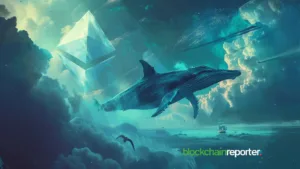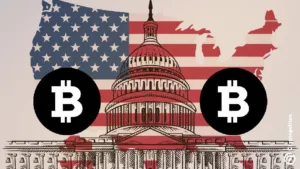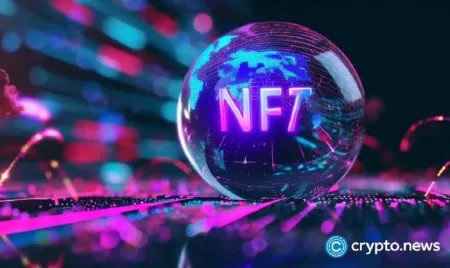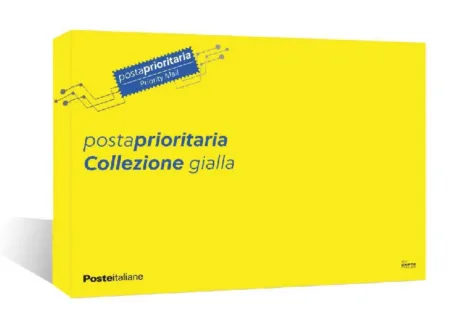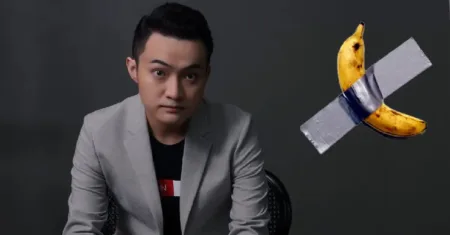Launched in January 2023, the Ordinals Protocol opened the Bitcoin ecosystem up to the craziness of NFTs, enabling users to inscribe data – images, art, videos, and more – to individual Bitcoin denominations known as satoshis.
The idea of bringing NFTs to the Bitcoin network might have seemed frivolous to some.
Others, though, recognized the significance and heralded Ordinals as a shot in the arm for the Proof-of-Work blockchain.
Strong as it was, the digital gold narrative would now be supported by another compelling use-case as bitcoin became more than a deflationary digital currency: now it could double as a non-fungible piece of digital art or a piece of music.
Ordinals: From Inscriptions to Infinity
The arrival of Ordinals effectively enabled the minting of NFTs directly onto the Bitcoin blockchain for the first time. The idea is credited to ex-Bitcoin Core contributor and Ordinals creator Casey Rodarmor.
Ordinals represents a system wherein serial numbers are assigned to satoshis, giving each a unique identifier which can be tracked across transactions and enabling users to attach supplementary data to them (inscriptions).
Mere months after the arrival of Ordinals, an anonymous developer pioneered BRC-20, a token standard that extended Bitcoin functionality by supporting the minting and transfer of fungible tokens via a protocol.
The experimental standard – which utilizes Ordinal inscriptions to embed token data directly on the blockchain – has been a revelation: less than a year after the launch of Ordinals, moonshot BRC-20 meme coin ORDI surpassed $1 billion in market cap.
As for Ordinals, around 66.5 million inscriptions have been made on satoshis according to Dune Analytics.
Given there are 100 million satoshis per bitcoin, we have some way to go before inscriptions equate to a whole coin. The dollar amount generated by Ordinals fees, meanwhile, exceeds $417 million.
In less than 18 months since Ordinals officially launched, there have been many meaningful milestones, from the debut of the first Ordinals Collection (Bitcoin Shrooms) to the arrival of the first-ever inscription service (OrdinalsBot) and the aforementioned success of ORDI.
Among the biggest milestones was the opening of a Bitcoin NFT marketplace on Magic Eden, which set the scene for frantic trading of Bitcoin-based BRC-20 NFTs, akin to the Ethereum NFT boom of 2021.
How Do Bitcoin Ordinals Compare to Ethereum NFTs?
So, how do the bitcoin-based NFTs conceived compare to the more long-established equivalents on Ethereum?
The major difference worth noting is that Ethereum NFTs are created using smart contracts based on standards like ERC-721 and ERC-1155.
This actually means that NFT data can be stored on different layers of the Ethereum blockchain or even on the InterPlanetary File System, with NFTs benefitting from greater functionality. By contrast, bitcoin NFTs are recorded directly on the eponymous blockchain.
Another point of divergence relates to transaction fees. Because Ordinals are stored on-chain, transaction fees are higher. Ethereum NFTs, by contrast, can be stored off-chain and thus benefit from lower fees.
Because NFT royalties work via smart contracts, and Bitcoin is not a smart contract network, Ordinals do not entitle creators to royalty revenue on re-sales of their work.
That said, there are initiatives which seek to bring smart contract capability to Bitcoin, covenants being one example.
Although maligned by some for bringing DeFi degeneracy to Bitcoin (not to mention driving up network fees), Ordinals and BRC-20 have been praised by the likes of Vitalik Buterin, who hailed the “organic return of builder culture” to the PoW network last summer.
It is a culture that has collided with Ethereum’s in the form of the BRC-721 token standard which enables the bridging of ERC-721 NFTs from Ethereum to Bitcoin.
Interestingly, Ordinals can be leveraged for purposes beyond inscribing a message onto a satoshi: a recent initiative by major BTC hodler MicroStrategy sees the protocol utilized to enable the creation of trustless, tamper-proof decentralized identifiers (DIDs).
There is an argument to be made that Ordinals has learned lessons from the previous NFT boom and, since inscriptions cannot be modified post-creation and bitcoin NFTs are inherently scarcer, they are better at preserving their value. Time will tell.
The Blooming of Bitcoin Layer-2s
The success of Ordinals is inextricably linked with the rise of Bitcoin Layer-2s, secondary protocols built on top of Bitcoin and intended to address the network’s scalability challenges while enhancing its utility.
In a sense, this evolution of the Bitcoin network is following a similar trend to Ethereum, which spawned its own multitude of Layer-2s during the last major DeFi boom.
One such Layer-2 is Merlin Chain, which leverages ZK-Rollup technology to compress transaction data and therefore enable faster and cheaper transactions.
Other distinguishing features of the L2 include its decentralized oracle network, on-chain BTC fraud-proof modules, and compatibility with the Ethereum Virtual Machine.
Despite only launching earlier this year, Merlin has become by far the biggest Bitcoin sidechain, its $1 billion + TVL vastly exceeding that of Rootstock, Stacks and other Bitcoin L2s.
The team behind Merlin Chain previously developed BRC-420, a standard that transforms Ordinals inscriptions into assets that can interact with each other – known as recursive inscriptions.
Notably, BRC-420 introduces a royalty standard, entitling developers to revenues from usage of their creations, with the team committed to unleashing the potential of Bitcoin’s native assets, protocols like Ordinals, and attendant products.
With the market cap of Bitcoin L2 solutions now exceeding $4.3 billion less than 18 months after the launch of Ordinals, Casey Rodarmor has a lot to be proud of.
Not that the developer has rested on his laurels: in April he launched Runes, a protocol for fungible tokens that leverages Bitcoin.
Disclaimer: The text above is an advertorial article that is not part of Cryptonews.com editorial content.
Read the full article here
